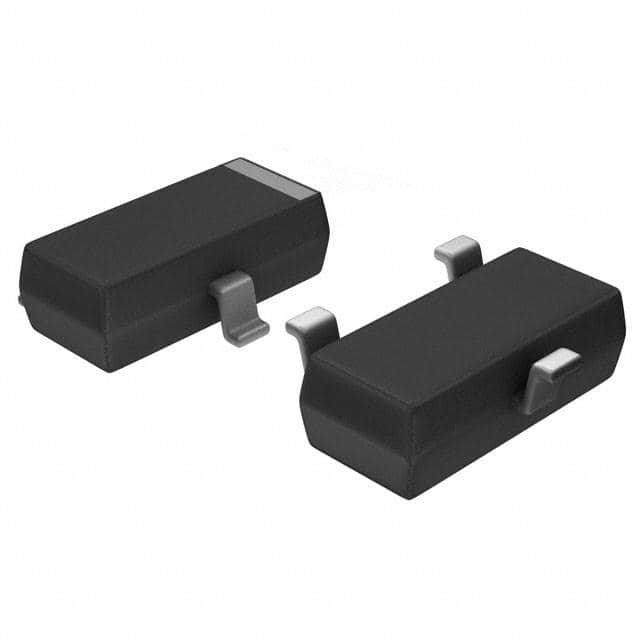MMBD1502A
Introduction
The MMBD1502A is a diode belonging to the category of small signal diodes. It is commonly used in electronic circuits for various applications due to its unique characteristics and performance.
Basic Information Overview
- Category: Small signal diode
- Use: Rectification, signal demodulation, and mixing
- Characteristics: High-speed switching, low forward voltage drop, and small package size
- Package: SOT-23, SOD-123, or similar small surface mount packages
- Essence: Efficient signal processing and rectification
- Packaging/Quantity: Typically available in reels of 3000 or 5000 pieces
Specifications
- Forward Voltage Drop: 0.7V (max)
- Reverse Voltage: 75V
- Forward Current: 200mA
- Reverse Recovery Time: 4ns (typical)
Detailed Pin Configuration
The MMBD1502A typically comes in a SOT-23 package with three pins: 1. Pin 1: Anode 2. Pin 2: Cathode 3. Pin 3: No Connection
Functional Features
- High-speed switching capability
- Low forward voltage drop
- Small form factor for space-constrained designs
- Suitable for high-frequency applications
Advantages and Disadvantages
Advantages: - Fast switching speed - Low power dissipation - Compact size
Disadvantages: - Limited reverse voltage tolerance - Relatively low current handling capacity
Working Principles
The MMBD1502A operates based on the principles of semiconductor physics, utilizing the properties of P-N junctions to allow current flow in one direction while blocking it in the reverse direction. This enables efficient rectification and signal demodulation in electronic circuits.
Detailed Application Field Plans
The MMBD1502A finds extensive use in the following applications: - Signal rectification in audio and radio frequency circuits - Demodulation of amplitude-modulated signals - Mixing and modulation in communication systems - Signal conditioning in sensor interfaces
Detailed and Complete Alternative Models
Some alternative models to the MMBD1502A include: - 1N4148: A general-purpose diode with similar characteristics - BAT54: Dual series Schottky diode with comparable specifications - BAV99: Dual series switching diode suitable for high-speed applications
In conclusion, the MMBD1502A is a versatile small signal diode with high-speed switching capabilities, making it suitable for various electronic applications requiring efficient signal processing and rectification.
Word Count: 346
Lista 10 Vanliga frågor och svar relaterade till tillämpningen av MMBD1502A i tekniska lösningar
What is MMBD1502A?
- MMBD1502A is a dual common cathode Schottky diode designed for general purpose low power applications.
What are the typical applications of MMBD1502A?
- MMBD1502A is commonly used in high-speed switching, voltage clamping, protection circuits, and polarity correction applications.
What is the maximum forward voltage of MMBD1502A?
- The maximum forward voltage of MMBD1502A is typically around 0.5V at a forward current of 1A.
What is the reverse voltage rating of MMBD1502A?
- MMBD1502A has a reverse voltage rating of 40V.
What is the maximum average rectified current of MMBD1502A?
- The maximum average rectified current of MMBD1502A is approximately 500mA.
Can MMBD1502A be used in high-frequency applications?
- Yes, MMBD1502A is suitable for high-frequency applications due to its fast switching characteristics.
Is MMBD1502A suitable for use in temperature-sensitive environments?
- MMBD1502A has a wide operating temperature range and can be used in various temperature-sensitive environments.
What are the package options available for MMBD1502A?
- MMBD1502A is available in various surface mount packages such as SOT-23 and SOT-323.
Does MMBD1502A require any external components for typical applications?
- In most typical applications, MMBD1502A does not require additional external components for basic functionality.
Are there any known reliability issues with MMBD1502A?
- MMBD1502A is a reliable component when used within its specified operating conditions and application guidelines.


